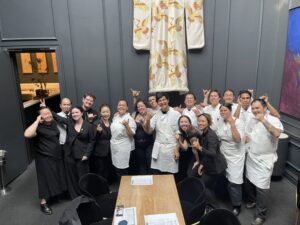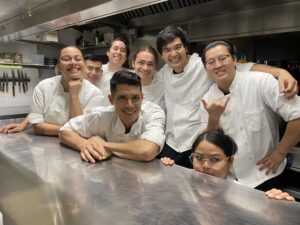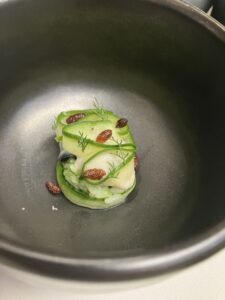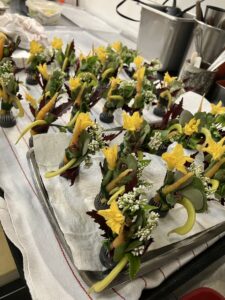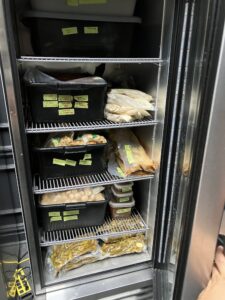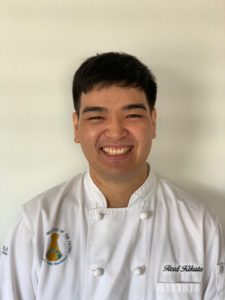
My love and interest in cooking started from a young age, watching my grandmother make home cooked meals, which eventually led to her teaching me the basics of cooking. The foundation and flavors of my cooking stem from my grandmother's very traditional Japanese home cooking, which is why I chose Nisei, a Michelin starred Japanese American restaurant in San Francisco for my Ment’or Grant stage. The food at Nisei is heavily influenced by Japanese technique and flavor combined with a collective of fine dining techniques, as well as flavors from other cuisines. Staging at Nisei was the perfect choice to experience a Michelin environment while still working with familiar flavors and techniques. The Head Chef & Owner David Yoshimura was also a former Ment’or Grantee.
On my first day at Nisei I was greeted by a very kind and warm hearted team, especially by Chef David. The day consisted mostly of becoming familiar with the kitchen and how things operated. I met the staff and learned about the food and techniques that were used. I saw multiple things that interested me. Nisei has their own fermentation fridge where they ferment and store their own vegetables. They also dry and cure their proteins in-house, rotating between items such as cured duck, pork belly and tuna. Of the most interest to me was how they brought in live unagi and butchered them in-house.
My first week consisted mostly of helping prep in the morning with things like picking herbs from the roof top garden, straining stocks, receiving deliveries and learning the processes and operations of the restaurant. For service, I was able to move around to different stations and learn how the kitchen operated and plate a few dishes. It was truly incredible to witness the amount of precision and organization that went into running a Michelin kitchen, and the caliber and discipline it takes to work in such an environment. Two of the skills I learned early on was how to stay clean and work tightly in a small space. I learned to plan out my tasks using the smallest space possible while being extremely clean.
In my second month I was given the opportunity to work the line in the Garmo 1 station, which is the introduction station to Nisei and most kitchens. I was in charge of the opening bites in tandem with my partner on Garmo 2. Being on this station taught me a lot about planning and prep. Garmo 1 had the opening bite which is a delicate arrangement of edible flowers and baby vegetables known as “ikebana.” The ikebana was the guests’ first introduction to the meal and was known as the “wow factor” upon the guests’ arrival. Ikebana more commonly refers to Japanese flower arrangements intended to convey a certain feeling or emotion. Along with conducting regular service for an average of 45 guests a night, Nisei has a bar for which we also prepared food. I learned how to balance the pace of the prix fixe menu with the rush of à la carte orders and how to serve dishes in a timely manner.
Overall the stage experience at Nisei was eye opening and inspiring. Seeing the caliber of skill, dedication and creativity at Nisei has definitely influenced me as a chef. I want to bring back and implement at the restaurant in Hawaii the same attention to detail as Nisei, including how things are organized and labeled. Above all, what I learned and gained from my experience at Nisei is to always strive to be the best version of myself, and to dedicate myself to improving and achieving consistency. I am very grateful for having been given this opportunity to learn and explore the culinary world.
